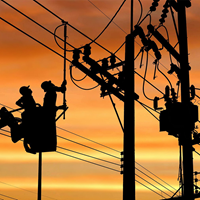Hawai'i’s Path to Decarbonization: Keeping the Lights on as the Last Coal Plant Turns Off
Authors:
- Caroline Carl, Leidos/Hawai‘i Energy
- Jennifer Potter, Hawaii Public Utilities Commission
- Scott Glenn, Hawaii State Energy Office
- Noreen Reimel, Leidos/Hawai‘i Energy
- Emily Levin, VEIC
- Asa Parker, VEIC
Presented at the 2022 ACEEE Summer Study on Energy Efficiency in Buildings, this paper explores the peak-load reduction efforts of Hawai‘i Energy, the state’s energy efficiency utility.
It shows how collaboration between Hawai'i Energy, the electric utility, state agencies, and the Hawaii Public Utilities Commission, are ensuring that Oahu avoids power disruptions in the short term and reaches its decarbonization goals by 2045. VEIC is proud to be part of the team administering these efforts.
In 2015, Hawai'i became the first U.S. state to pass a law to decarbonize its electricity system and establish a 100 percent renewable target. Unlike power grids on the mainland, Oahu is not able to shift to gas power or tap into other power grids as each island operates its own system. Since Hawaii residents already incur the nation’s highest electricity prices, increasing imports of oil and diesel into the State is also not feasible.
Investments in renewables and battery storage paired with energy efficiency and demand reduction are the best options.
The challenge presented by the closure of the state’s last coal-fired plant in the fall of 2022, requires key collaboration from stakeholders to avoid brownouts and blackouts, especially during peak evening hours. To offset the coal plant’s power generation, solar energy projects and utility-scale battery systems are under construction or being planned.
Download PDF (new tab)